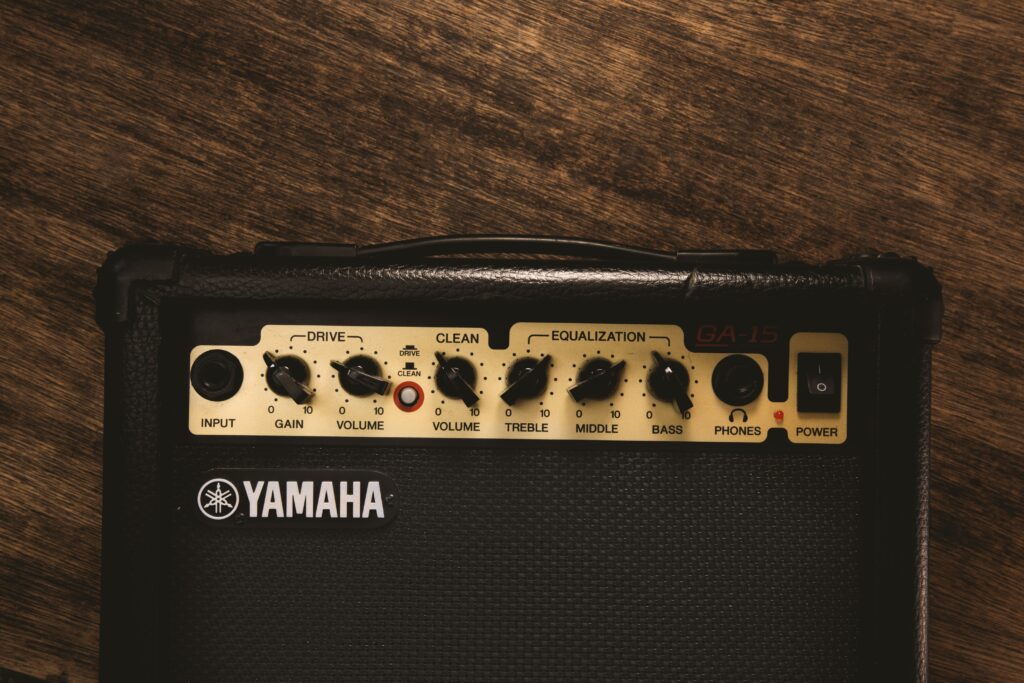A Beginner’s Guide to Guitar Amplifiers: What to Look For
If you’re just starting out with guitar playing, you might be wondering what type of amplifier you should invest in. With so many different brands and models available, it can be overwhelming to make a decision. In this beginner’s guide to guitar amplifiers, we’ll take a look at some of the key features you should consider before making your purchase.
Type of Amplifier
One of the first things to consider when buying a guitar amplifier is the type. There are several different types of amplifiers available, including tube, solid-state, and hybrid. Tube amps are known for their warm, vintage sound, but they can be expensive and require more maintenance. Solid-state amps are more affordable and durable, but they can have a harsher, more digital sound. Hybrid amps combine the best of both worlds, offering a warm tone with the durability of solid-state technology.
Power Rating
Another important feature to consider is the power rating of the amplifier. This is measured in watts and determines how loud the amplifier can get. A higher wattage amplifier will be able to produce a louder sound, but it will also be heavier and more expensive. For beginners, a lower wattage amplifier (around 15-30 watts) will be sufficient for practicing at home.
Speaker Size
The size of the speaker in your amplifier will also affect the sound. A larger speaker will produce a deeper, richer sound, while a smaller speaker will be brighter and more focused. Most beginner amplifiers will come with a 10-inch speaker, which is a good all-around size.
Built-in Effects
Many amplifiers come with built-in effects, such as distortion, reverb, and chorus. While these can be convenient, they can also add to the cost of the amplifier. For beginners, it’s generally better to invest in a simple, straightforward amplifier without too many bells and whistles.
Price
Finally, the price of the amplifier will be a major factor for most beginners. You can find amplifiers at a wide range of price points, from under $100 to several thousand dollars. For beginners, it’s generally best to start with a more affordable option and upgrade as your skills and needs evolve.
Here are five recommended products for beginners:
- Fender Champion 20: This solid-state amplifier has a 20-watt power rating and a 10-inch speaker, making it a great choice for beginners. It also has built-in effects like distortion and reverb.
- Vox Pathfinder 10: This 10-watt tube amplifier has a classic, vintage sound and a compact design that makes it easy to transport. It’s also affordably priced, making it a great option for beginners on a budget.
- Boss Katana 50 MkII: This solid-state amplifier has a 50-watt power rating and a 12-inch speaker, making it a bit more powerful than some other beginner options. It also has a wide range of built-in effects and a versatile tone-shaping system.
- Yamaha THR10II: This modeling amplifier has a unique, compact design that’s perfect for practicing at home. It also has a wide range of built-in effects and amp models, as well as a USB port for recording.
- Orange Crush 35RT: This solid-state amplifier has a 35-watt power rating and a 10-inch speaker, making it a great all-around option for practicing and small gigs. It also has built-in effects like reverb and chorus.
In conclusion, when choosing a guitar amplifier, it’s important to consider factors like type, power rating, speaker size, built-in effects, and price. By taking these factors into account, you can find an amplifier that will meet your needs as a beginner guitarist. While there are many great options available, the recommended products listed above are a good place to start. Ultimately, the right amplifier for you will depend on your personal preferences and playing style, so be sure to do your research and try out different models before making a decision. With the right amplifier, you’ll be able to take your guitar playing to the next level and enjoy the full range of sounds and effects that your instrument has to offer.
Thanks for reading this blog post on music equipment reviews! If you enjoyed this article and want to read more like it, make sure to check out our blog page at https://rhythmsphere.com/blog/. There, you’ll find a wide variety of music-related topics, including product reviews, industry news, and helpful tips and tricks. Don’t forget to subscribe to our newsletter so that you never miss an update. Thank you for your continued support of Rhythmsphere!

